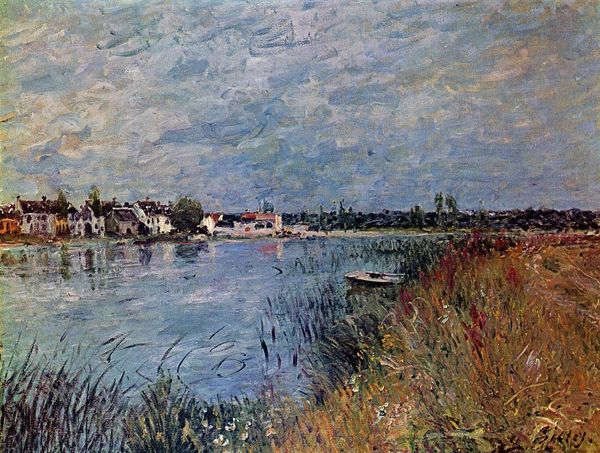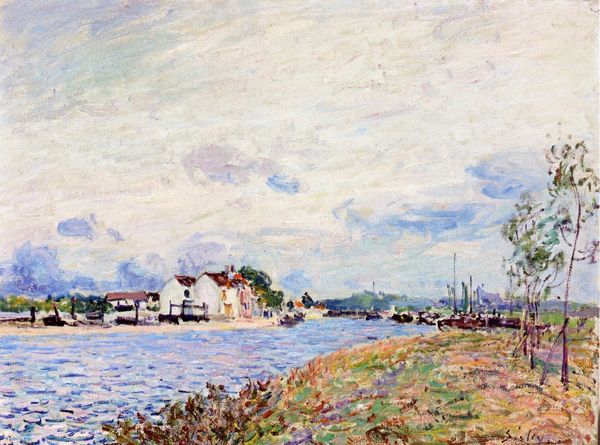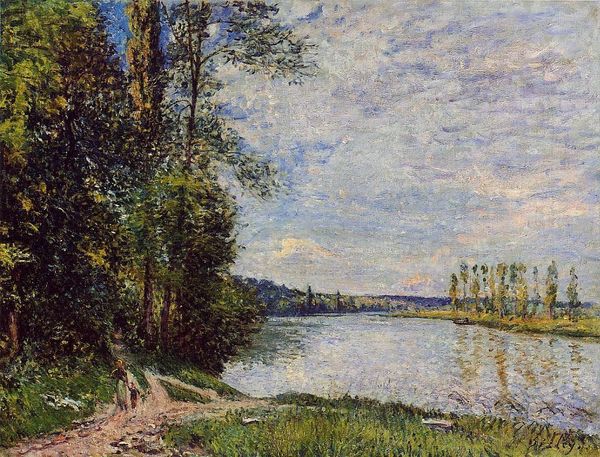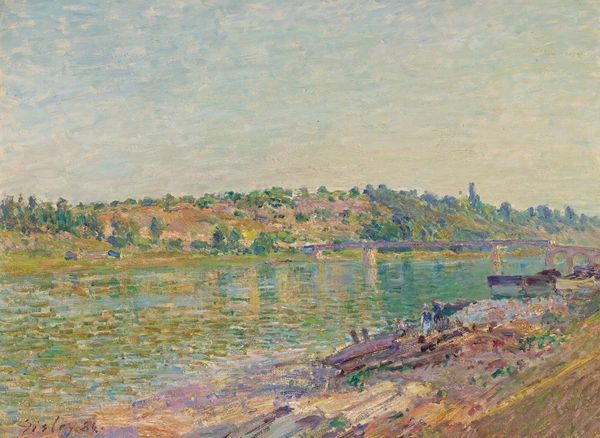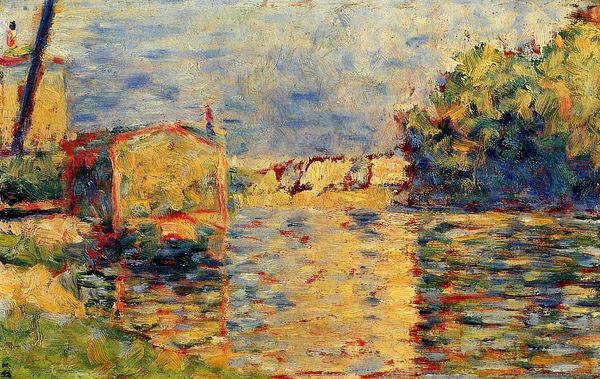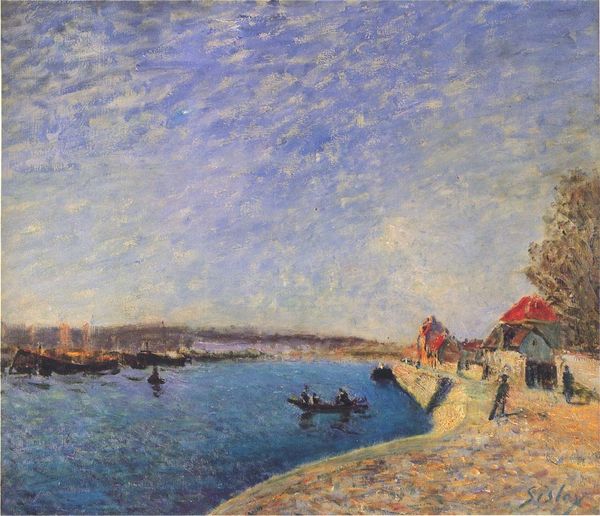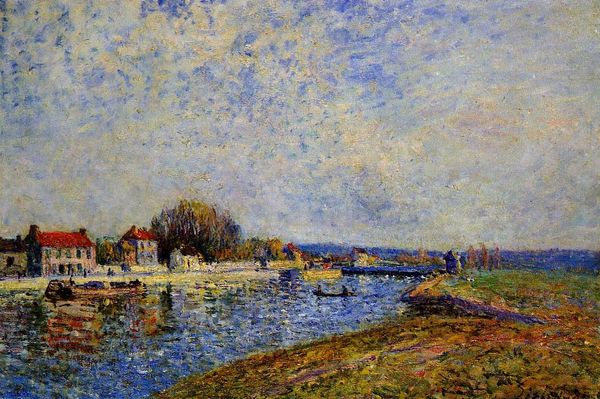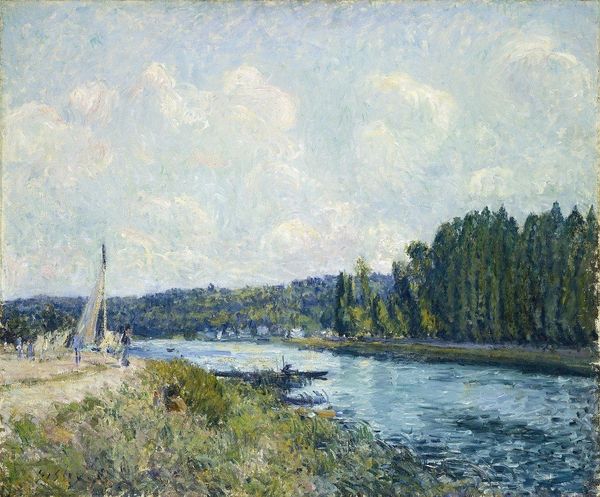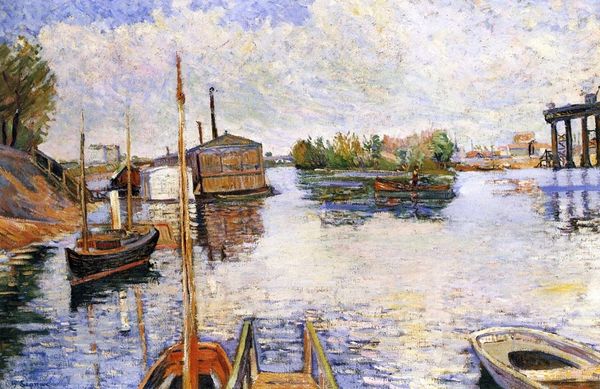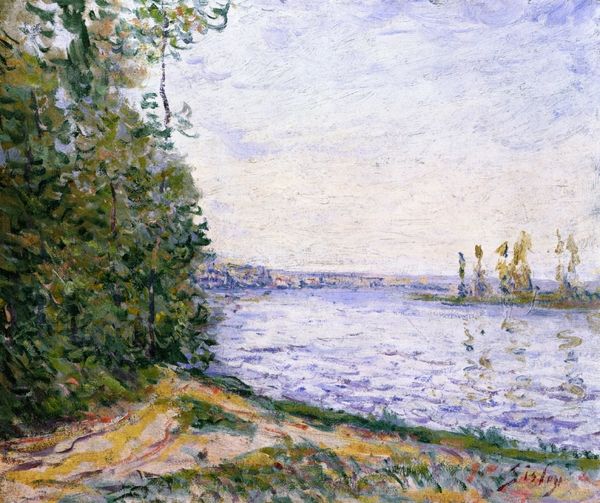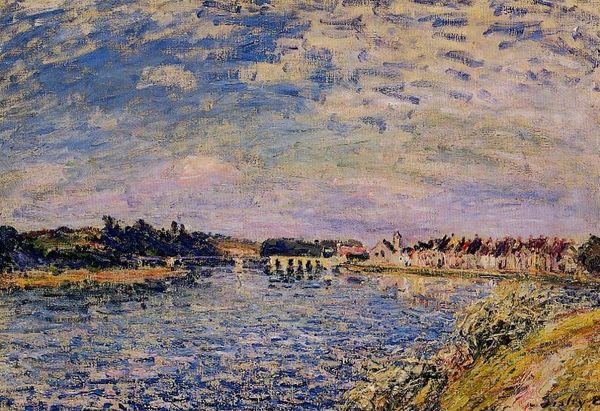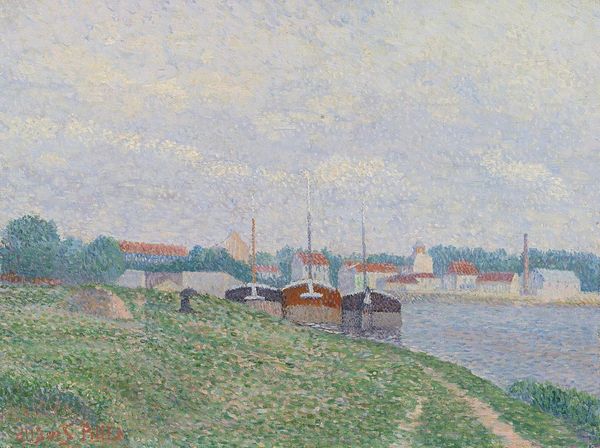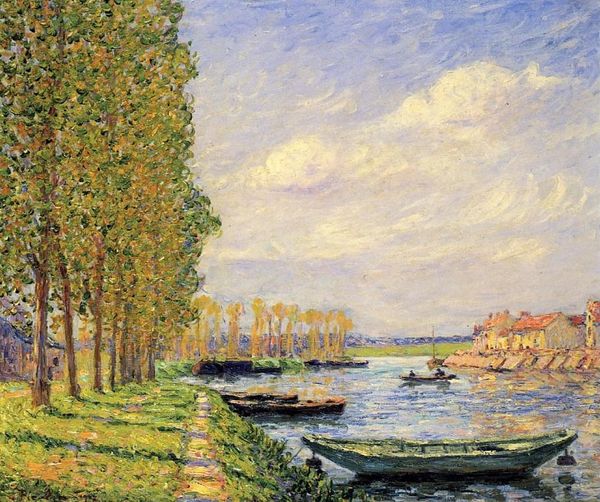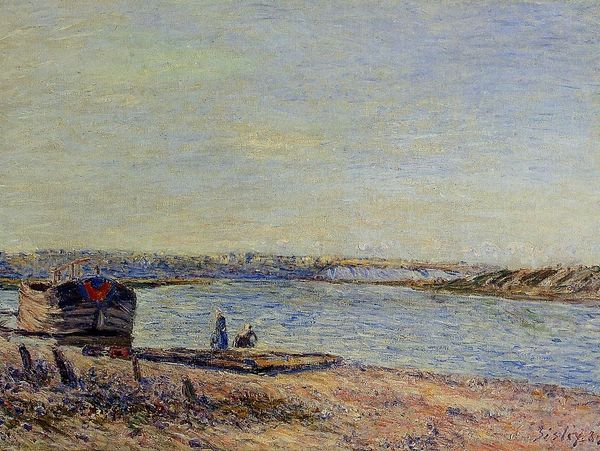
Dimensions: 52 x 65 cm
Copyright: Public domain
Editor: "Moored Boats," painted by Vincent van Gogh in 1887 using oil paint. It's such a somber piece. I’m really struck by how the heavy sky and the static boats create this sense of quiet melancholy. What do you see in this work? Curator: For me, it speaks volumes about Van Gogh’s own positioning within the Parisian art world at the time. Consider where this painting was created: Asnières, a suburb experiencing rapid industrialization. Van Gogh, alongside artists like Signac, were drawn to this periphery. Why? Was it merely the lower rents, or something more? Editor: Maybe he found artistic freedom in not being in the direct center? Curator: Precisely. The art market was concentrated in the city center, dominated by academic salons. But the outskirts offered an escape from those rigid expectations. Painting en plein air along the Seine, artists like Van Gogh positioned themselves both within and outside the established art structures, capturing everyday scenes, marking a separation between the old and the new. This freedom, and indeed, his social critique, is mirrored by his unique expressive visual style, distinct from Impressionism yet not quite fully Post-Impressionist. Notice how the thick application of paint gives these ordinary boats, this almost ordinary river view, a palpable tension? It isn't a straightforward celebration of leisure. Editor: So the painting, in a way, embodies Van Gogh's struggle for artistic identity? He's depicting the industrial fringe, developing his own artistic style on the margins of the mainstream art world. Curator: Exactly. And by focusing on such scenes, artists like Van Gogh contributed to a shift in what was considered worthy of artistic representation. It reflected social and aesthetic reconfigurations, influencing both how we make art, and the subjects available for creative treatment. Editor: I see it differently now. It’s more than just melancholy; it’s about questioning the very institutions surrounding art itself. Curator: Absolutely. It prompts us to consider the public role of art and the politics inherent in image making.
Comments
No comments
Be the first to comment and join the conversation on the ultimate creative platform.
